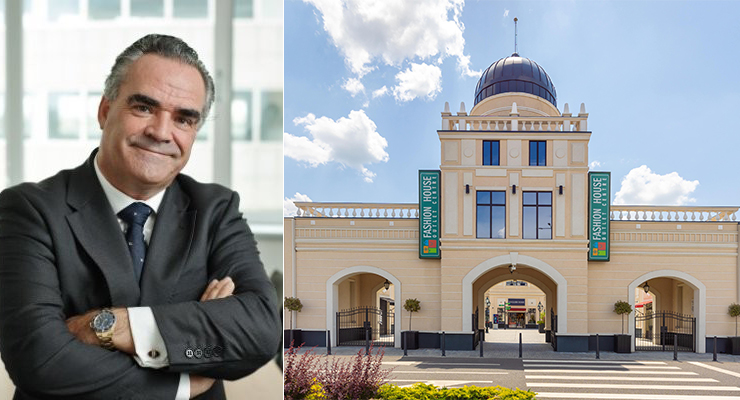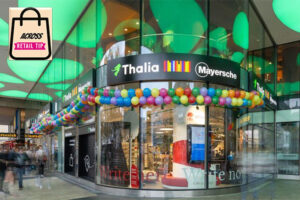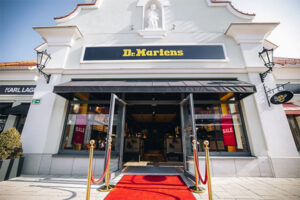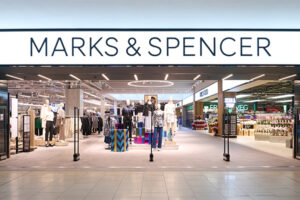ACROSS: WHAT ARE THE MOST IMPORTANT INNOVATIONS, DEVELOPMENTS, AND CHANGES WITHIN THE OUTLET SECTOR IN 2024, ACCORDING TO YOU?
BRENDON O’REILLY: FASHION HOUSE offers 54,000 sq m outlet GLA in Romania and Russia. These markets are entirely different. We will get back to Russia later. If we look at the current situation in Europe, the market is on pause. Even since before Covid, we, as FASHION HOUSE and the whole outlet industry, have benefited massively. Also, it sounds counterintuitive to say we benefited from Covid, but we did. The first reason is simple: You put on five kilograms because you enjoyed eating or lost five kilograms because you started to work out at home. Either way, everyone needed a new wardrobe. After the lockdown, customers came directly to the outlets. We have benefited from a change in awareness. We welcomed a group of customers who had never been to outlets.
ACROSS: AND YOU MADE THESE NEW CUSTOMERS COME BACK.
O’REILLY: Yes, especially 30- to 55-year-old family-oriented female customers who were convinced and changed their shopping habits from e-commerce to outlet shopping. When the conflict and the energy crisis occurred, with all the effects, such as interest rate hikes, mortgage increases, utility costs, etc., the middle class massively changed its consumer behavior. Our most significant impact is that customers bought fewer premium brands at premium prices. Shopping centers suffered losses, but the outlet industry benefited again because customers had a good experience with us after the pandemic.
ACROSS: LET’S EXAMINE THE ROMANIAN MARKET MORE CLOSELY. APART FROM THE GENERAL TRENDS, WHAT IS UNIQUE ABOUT THE ROMANIAN CONSUMER?
O’REILLY: There was a noticeable change in Southern Europe regarding brand and regional policy. Before Covid, many brands served the EMEA market, including Europe, the Middle East, and Asia, a vast region. Many brands changed their strategy during and after Covid, dividing Europe into north and south. Before, the main focus was on Northern Europe because of its purchasing power. Countries like Romania or Bulgaria were not focused upon. But with this strategic change, all of a sudden, this marketplace became much more significant. Many brands have been added. For example, five years ago, Romania was not a corporate country for adidas; they accessed the market through a local partner. So, the distribution structure, not only in Romania but also in Southeast Europe, has changed completely. For example, Tommy Hilfiger and Calvin Klein have moved their strategic management for Romania from Amsterdam to Greece. We have long waited for these brands, but now they are all here and have big plans. They are coming directly because they don’t want to open shopping centers in ten countries before they enter the outlets.
Romanian consumers are generally price-conscious but increasingly value quality and brand prestige. A growing middle class and higher disposable income has led to greater interest in premium and international brands. Although the online shopping developed in the recent years in this country, shopping malls remain popular in Romania – especially for social activities, and many consumers still prefer to visit brick-and-mortar stores to try on clothing, feel the fabric, and check fit before making a purchase. However, now the middle class is squeezed due to the price increase in almost all aspects of a household. Therefore, people investigate more affordable options when it comes to buying clothing and footwear, but without giving up on quality. This takes me to my previous point: it is why outlet stores increased in popularity, not only in Romania but also across Europe.
ACROSS: HOW DO YOU SEE THE SOUTHEAST EUROPEAN REGION IN GENERAL REGARDING ITS MARKET POTENTIAL? FOR EXAMPLE, THERE IS NO OUTLET BETWEEN ZAGREB AND THESSALONIKI.
O’REILLY: New outlets will come. We have been approached several times to either to develop or partner for new projects. I developed an outlet in Serbia ten years ago. There is already one in Bulgaria, which is not a traditional one because it is a multi-story building, but a new one is already planned. The market development will be very selective because we all know the outlet criteria. But it is happening, and as said, the brands are adapting to the general development, which is most important. Global brands like adidas, Hugo Boss, and Levi’s – are all looking to these markets.
ACROSS: YOU HAVE RECENTLY OPENED THE SECOND PHASE AT FASHION HOUSE OUTLET CENTRE PALLADY. WHAT IS THE HISTORY OF THIS LOCATION?
O’REILLY: We bought this plot 12 years ago, a land development plot. We looked at the main traffic arteries and considered where the new ring should be. As always, sometimes you’re right and sometimes wrong with these decisions. In this case, we hit it. That plot is 500 meters from the intersection of the new ring, which didn’t exist ten years ago. So, the Outlet Center is the new attraction of the eastern side of Bucharest and it is already a destination which is easy accessible and attracts people from other counties especially during summer, due to its positioning on the way to seaside. The project, which covers an area of nearly 14,000 square meters, opened in 2021 and includes over 50 stores, a playground, restaurants, and over 300 parking spaces.
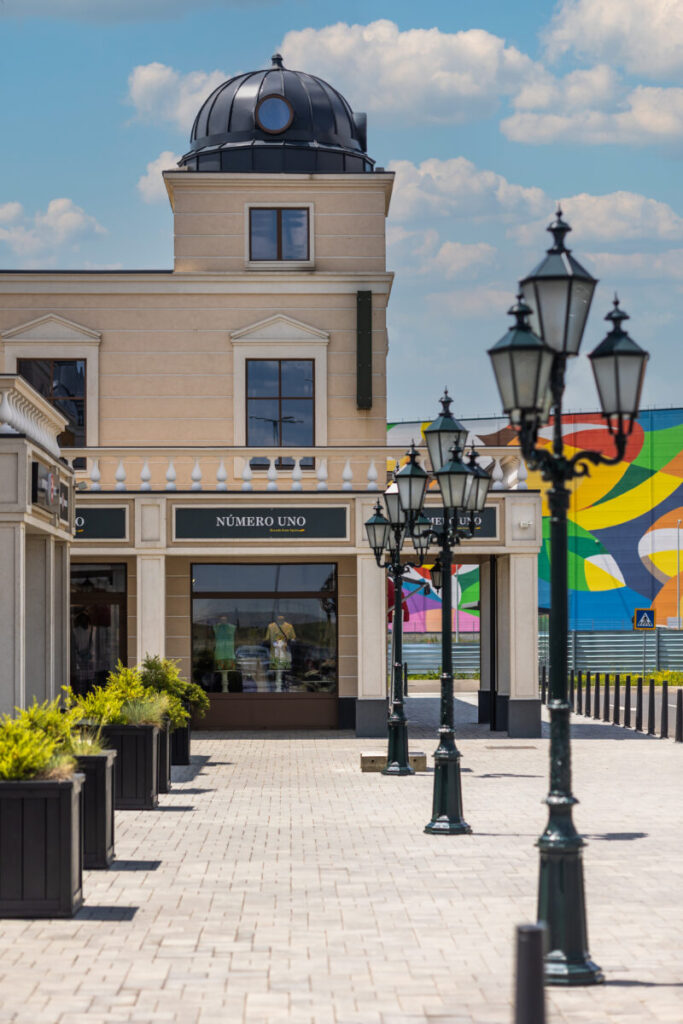
FASHION HOUSE OUTLET CENTRE PALLADY
Outlet Centre Pallady officially inaugurated the second phase of its project, bringing to the forefront new brands such as adidas, Tommy Hilfiger, Calvin Klein, Under Armour, D’S Damat, Guess, Chic Chic, and others. With this expansion of over 5,700 sq m, the center’s total area reaches almost 14,000 sq m, with a lease rate of over 70%. The total investment in developing the entire FASHION HOUSE Pallady amounts to 45 million euros.
credit: FASHION HOUSE Group
ACROSS: UNLIKE YOUR OTHER CENTER IN BUCHAREST, MILITARI, THIS ONE IS OPEN-AIR.
O’REILLY: Yes, Pallady was the first ever open-air FASHION HOUSE Center. The open concept is very popular. People love it, and a lot is happening here. For the first time, we have a separate 1000-meter adidas concept outlet, which looks like a shoe and is already visible from the highway. This is a new and outstanding concept; there are only three of them in the world: Berlin, Japan, and one now in Pallady. adidas’s brand penetration in Central Europe, particularly Romania, is massive. FASHION HOUSE outlets are architecturally dramatic and extravagant, so this fits perfectly.
We have, in general, a great brand mix in Pallady. As the younger location, Pallady benefits from our other location, Militari, and many brands that are already successful in Militari will come to Pallady in the next one or two years. The brands will ask for large stores simply because they know that outlets, in general, are not only safety nets but cash generators for brands.
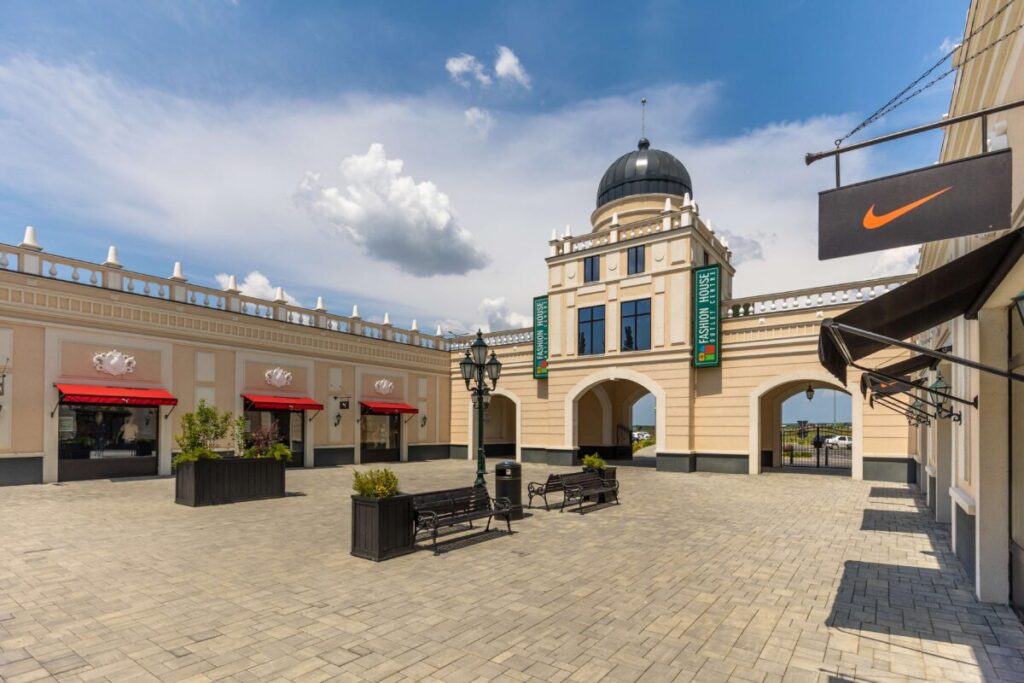
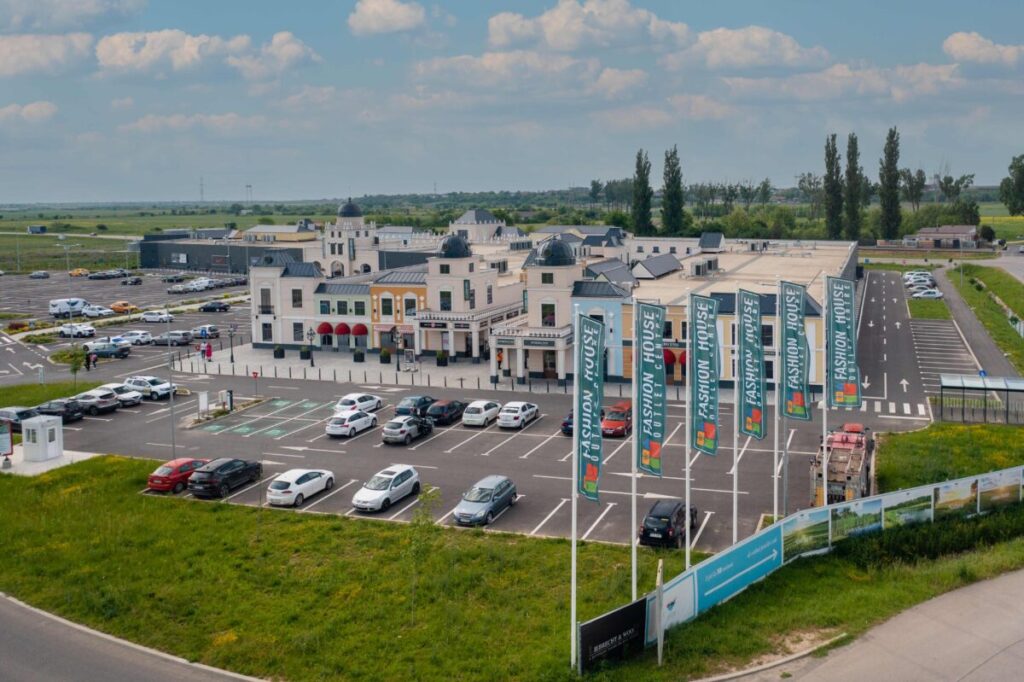
After the success of its first outlet center in Bucharest, FASHION HOUSE Group decided to significantly invest in developing a second outlet venue east of the outskirts of the Romanian capital. FASHION HOUSE Outlet Pallady was opened May 27th, 2021.
ACROSS: DO YOU OWN THE OUTLET MARKET IN ROMANIA?
O’REILLY: There is no other outlet market apart from FASHION HOUSE in Romania. Due to the success of our two existing locations, we are considering a third outlet. The only question is where it could be located. We need 1.5 to 2 million people who live within a 90-minute radius. That must be the goal for a location. Our most successful location was in Gdańsk, Poland, with 1.2 million people in the catchment area, but many tourists came. We are highly tenant-led in our decisions. 60% of our tenants say we need a third one. So, we are looking for a smaller but openair center location in another regional city in Romania.
ACROSS: YOU ALSO LIKE TO PLAN THE SURROUNDINGS OF YOUR LOCATIONS. WHAT ELSE HAPPENS ON THE PALLADY PLOT?
O’REILLY: After we built our outlet ten years ago, one of our investors approached us and said that a part of the plot we originally wanted to make a retail park would be ideal for leisure. We took a closer look at the market and found that, like the outlet sector, the leisure market is very specialized. To get financing for it, you must be a specialized operator. However, consumer demand for leisure offers is vast, and we want to build something here. We are fortunate with an investor closely linked to one of the largest leisure operators in Europe. Details cannot be communicated yet, but we are planning a partnership and a fascinating project. A little foretaste: This site will have a traditional wooden roller coaster. So, the plot of Pallady will change into a leisure center.
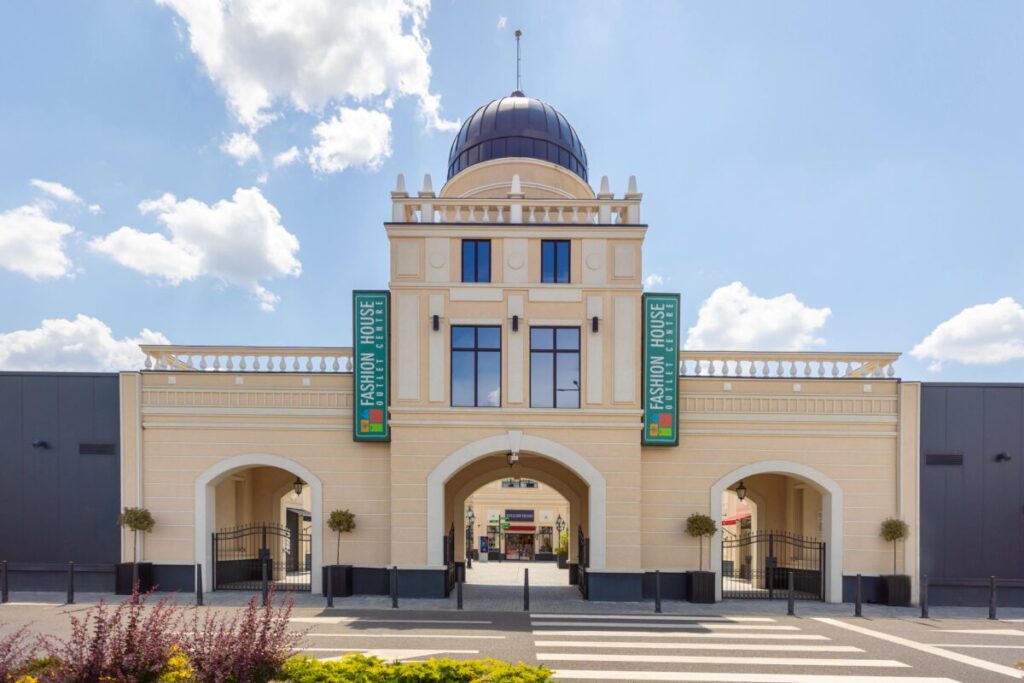
ACROSS: AS MENTIONED, YOU ARE PRESENT IN RUSSIA. APART FROM ALL POLITICS, PLEASE GIVE US AN INSIGHT INTO HOW RETAIL WORKS IN RUSSIA NOW.
O’REILLY: Our business in Russia continues to grow. That might sound counterintuitive in the light of current media reports. In Romania, we are 75% mono-branded company stores. In Russia, we were 85% mono-branded company stores before January 2022. We lost five tenants. What happened was that the big international brand names disappeared, but brands with almost the same offer replaced them. The companies sold or transferred their businesses to local companies. Samsonite is now Chemodan Pro; Reebok is now Sneaker box, and there are other examples. Most international companies left, but the local team did whatever they needed to make their business acceptable in Russia.
ACROSS: BUT THE PERFORMANCE OF SHOPPING CENTERS IN RUSSIA IS VERY DIFFERENT.
O’REILLY: The shopping centers’ performance has changed substantially. They lost important international mainstream brands like Zara, M&S, Banana Republic and H&M, but outlets are still performing. Differently, but performing well.
The concept is the same as before, but the tenants are relatively new and there is a reeducation process happening in the industry. Russian entrepreneurs are now trying to take advantage ang gain market share developing new concepts to replace what is lost. It still needs improvement. It’s still evolving, but they are learning fast. Let us face the facts: there are still 150 million people who need to have clothes, etc. For another example, our homeware tenants have quadrupled in size simply because Ikea no longer operates there.
ACROSS: NEVERTHELESS, YOUR PLANS FOR THE RUSSIAN LOCATIONS FUNDAMENTALLY CHANGED.
O’REILLY: Our outlet in St. Petersburg undoubtedly had a rough start. We opened on November 4, 2019, twenty weeks before Covid. I remember writing to my investors on the 1st of January 2022 that we compensated all the negatives that we experienced during COVID, and then another crises occurred. It had been an enormous challenge, but today, I proudly say that St. Petersburg is 94%t leased. Our Outlet in Moscow is 97% leased. We are looking forward to a change, but as investors, we can only make the most of the situation we see now.
ACROSS: THANK YOU FOR THESE INSIGHTS. WHAT ARE, IN GENERAL, YOUR PLANS REGARDING NEW LOCATIONS?
O’REILLY: We have never been acquisitive. We like what we do the way we do it. Earlier this year, I had exciting conversations about taking the FASHION HOUSE brand to Turkey. However, current events and the macroeconomic situation have slowed down. But Turkey is a very interesting market. There is potential for growth. We’ve got numerous Turkish tenants in Russia and Romania. The FASHION HOUSE name would be recognized in places like Antalya because of the many Russians who have relocated there.
ACROSS: AN ONGOING DISCUSSION IS TO CONVERT STRUGGLING SHOPPING MALLS INTO OUTLETS. COULD THAT BE A PLAYING FIELD FOR YOU?
O’REILLY: No, there is not even one example of a failed shopping center making a good outlet center. The reason is simple. It is just because landlords are never brave enough to close, refurbish, and then reopen. What they do is create a compromise. They bring some outlet tenants into a shopping center. This is not in the favor of consumers; it is only irritating and, therefore, a recipe for failure.
ACROSS: ANOTHER CONTROVERSIAL ISSUE IN THE OUTLET INDUSTRY IS THE IMPORTANCE OF F&B. OPERATORS HAVE VERY DIFFERENT PLANS. YOUR OUTLETS HAVE A RELATIVELY SMALL F&B OFFERING. WHAT IS YOUR VIEW ON THIS TOPIC?
O’REILLY: People come to outlets to shop. People come to shopping centers to stroll around, meet friends, and have a coffee or lunch. The major challenge is that 50% of our footfall comes from Monday to Friday, and 50% comes from Saturday and Sunday. How can a restaurant plan and keep itself alive when there is so little going on during the week, and it cannot cope with the high demand on the weekend? How can you plan the capacity? But of course, we need to find solutions because we need food courts and restaurants to maximize dwell time.
ACROSS: WHAT IS YOUR SOLUTION?
O’REILLY: In Romania, we have established partnerships with a local food provider who can keep up an offer for the weekends and reduce capacity during the week without cutting quality. This is a very individual solution. But it is a challenge. In FASHION HOUSE Outlet Militari, we invested one million euros into refurbishments, new developments and the new food court which has over 100 indoor and 150 outdoor seats. It is going very well, but F&B will always challenge industry.
ACROSS: AS A FINAL QUESTION: FROM YOUR POINT OF VIEW, WHAT ARE THE SUCCESS DRIVERS OF THE OUTLET INDUSTRY IN THE NEAR FUTURE?
O’REILLY: We still need more investors who understand our business. Several investors have invested in outlets and have done very well by partnering with operators in good locations. The banks are still missing out by ignoring outlets. From a development point of view, there are still promising markets, like Turkey. More mergers will happen when we come out of this capital markets pause. And I look forward to seeing that.
FASHION HOUSE Group is part of the Liebrecht & wooD Group, a real estate development company that has been active for thirty years in some of the most dynamic markets in the CEE Region. The company builds and manages various properties such as Office and Residential buildings, Shopping and Outlet Centers, and strategically positioned, state-of-the-art warehouses. Building construction, one of the group’s core businesses, allows it to be more flexible and develop quickly, as needed. This is one of the main reasons the projects are being completed in record time and delivered precisely when the market needs them the most.
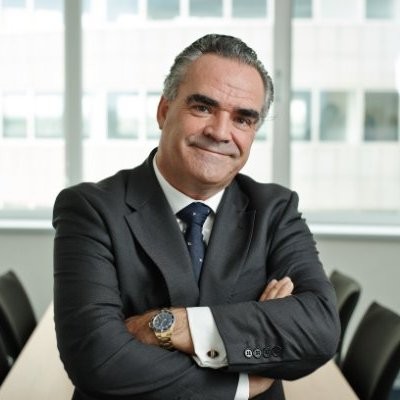
Brendon O’Reilly
Brendon O’Reilly is the Managing Director of FASHION HOUSE Group.

